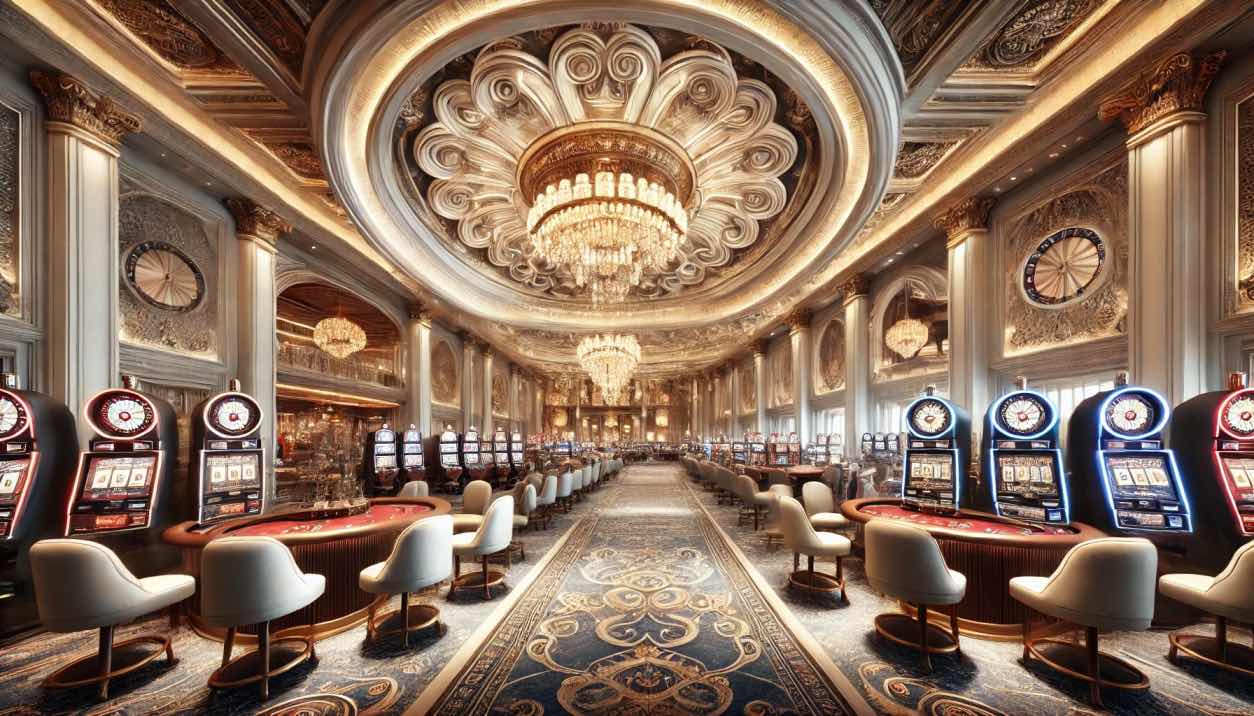Casinos are more than just places to gamble; they are immersive experiences carefully crafted to engage visitors on multiple sensory levels. The architecture of a casino, much like the design of VSO an innovative online casino platform, plays a crucial role in shaping the atmosphere, influencing player behavior, and ultimately driving business success. From grand facades to intricately designed interiors, every element of casino architecture is meticulously planned to create an environment of excitement, luxury, and entertainment.
The Psychology Behind Casino Design
Casino architects and designers leverage psychological principles to enhance the gaming experience. The strategic use of space, lighting, colors, and layout is all designed to keep players engaged and entertained. For example, many casinos avoid windows and clocks to create a timeless environment where players lose track of time and stay longer.
The concept of the "maze-like layout" is another psychological tool used in casino design. By creating winding pathways and strategically placing gaming tables and slot machines, casinos encourage players to explore more areas and increase their chances of engaging in additional games. This layout minimizes direct exits and subtly leads visitors deeper into the gaming floors.
Luxurious and Thematic Designs
Casinos are known for their grandeur, often featuring opulent architecture that exudes sophistication and luxury. High-end casinos in Las Vegas, Macau, and Monaco showcase extravagant chandeliers, lavish carpets, and breathtaking decor, all designed to make visitors feel like they are entering a world of exclusivity.
Many casinos adopt specific themes to create a unique experience. The Venetian in Las Vegas, for instance, replicates the charm of Venice with its gondolas and picturesque canals. Similarly, the Bellagio is famous for its Italian elegance and spectacular fountain shows, adding an element of theatricality to the gaming experience. These thematic designs create an unforgettable ambiance that attracts visitors beyond the allure of gambling.
The Role of Lighting and Acoustics
Lighting plays a significant role in setting the mood within a casino. Warm, inviting lights are often used in slot machine areas to create a cozy and engaging environment, while brighter lighting highlights the excitement of gaming tables. In some areas, subtle and indirect lighting is used to generate a sense of intimacy, especially in high-stakes rooms.
Sound design is another crucial element. Casinos use background music and sound effects to maintain an energetic atmosphere. The chiming of slot machines, the shuffling of cards, and the cheers of winners create an immersive soundscape that keeps players engaged. These sounds are strategically engineered to encourage players to stay longer and enjoy the experience.
The Future of Casino Architecture
With advancements in technology and changing consumer preferences, casino architecture is evolving. Modern casinos are incorporating digital elements, such as interactive screens and virtual reality experiences, to enhance player engagement. Additionally, there is a growing trend towards integrating outdoor spaces, natural lighting, and eco-friendly designs to appeal to a broader audience seeking a more holistic entertainment experience.
Online casinos have also influenced the design of physical casinos. Many land-based casinos are now integrating digital interfaces and hybrid gaming experiences to bridge the gap between traditional and online gambling.
Conclusion
The art of casino architecture is a blend of psychology, aesthetics, and functionality. Every detail, from the layout to the lighting, is meticulously designed to create a captivating and immersive experience for visitors. As technology and consumer preferences evolve, casino architecture will continue to innovate, ensuring that the thrill of gambling remains as engaging and exciting as ever.





